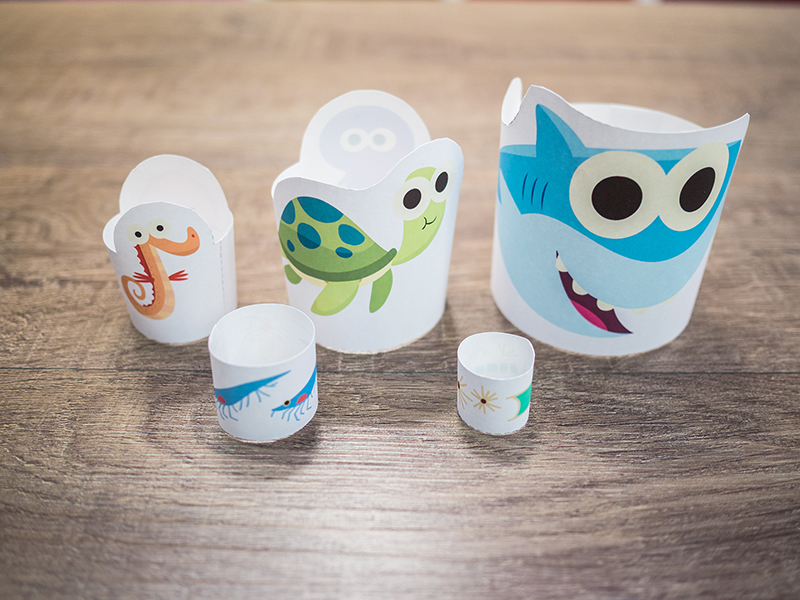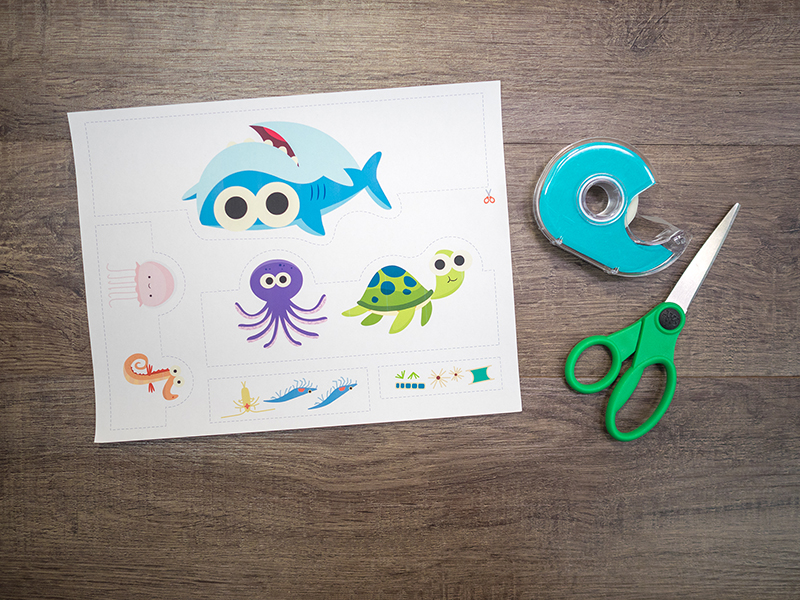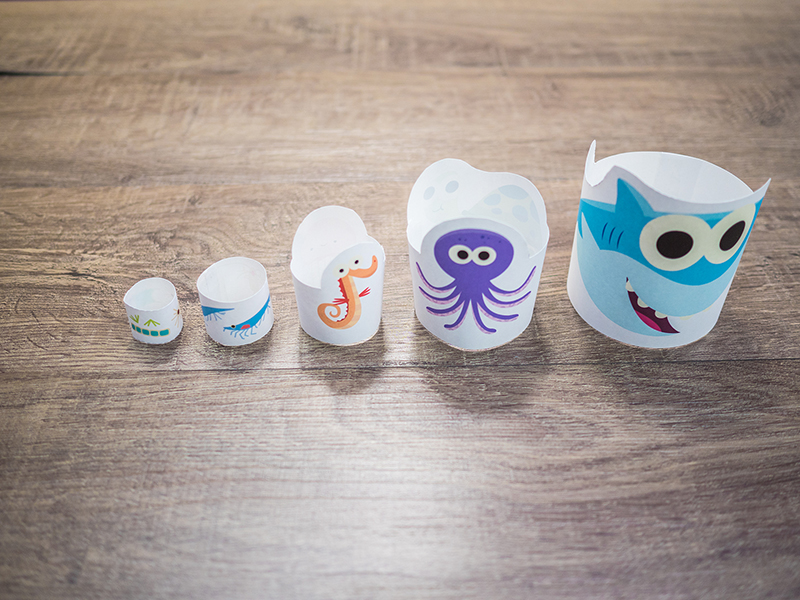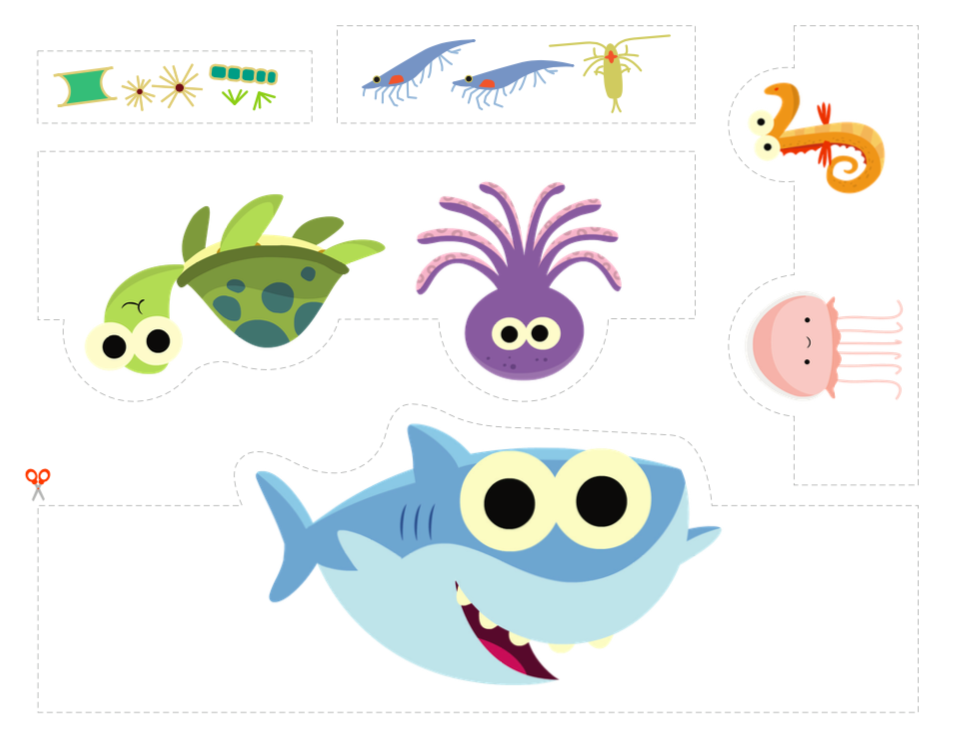
When the Sailor Went to Sea, she saw lots of animals, some of which eat each other. Here’s an activity inspired by Russian nesting dolls to show you who eats whom.

You need:
- this PDF, printed out
- scissors
- glue or tape
Cut out the templates and glue or tape them into rings. Now they can stand up, and they can be placed one inside the other.
At the bottom of the ocean food chain is phytoplankton, very tiny plants that float through the ocean. They get their energy from the sun. In the process, they produce half of the air we breathe. Thanks, phytoplankton!

Phytoplankton is eaten by zooplankton, very tiny animals that float through the ocean. They come in all different shapes; some look like tiny shrimp.
Zooplankton is eaten by small animals like seahorses and jellyfish.
They are both eaten by medium-sized animals like sea turtles and octopus.
And both of them are eaten by big animals like sharks. A shark is too big and fierce to be eaten by anything, so it’s called a top predator: it’s at the top of the food chain.
But an important thing to remember is that the creatures at the top could not live without the creatures at the bottom.
Even though the blue whale is the biggest animal of all, it doesn’t eat sharks. Instead, blue whales eat huge amounts of a very tiny creature: a type of zooplankton called krill.
Go for a walk in nature and look at the animals you see.
What do they eat?
What eats them?
You can even make nesting dolls for them, too.
What kinds of animals and plants do you eat?
For a great book about food chains, check out Wolf Island by Celia Godkin.
Don’t forget to follow us on Twitter, Instagram, Pinterest, and Facebook!
 Contributor
Contributor
Grant Harding is a puppeteer with a degree in biology and a passion for education and the environment. Follow Grant on Twitter, or check out his website.
Original content © 2018 Super Simple. Not to be reprinted without express written permission. Terms of Service.

 Click image for .pdf
Click image for .pdf